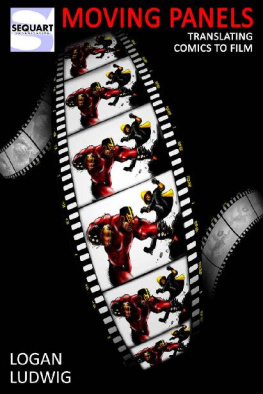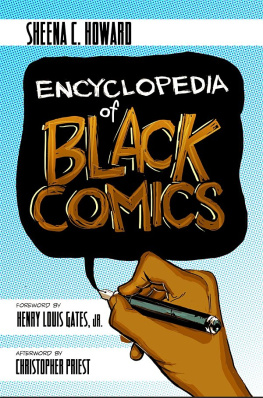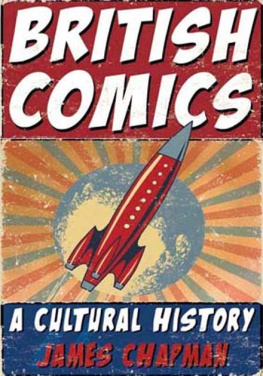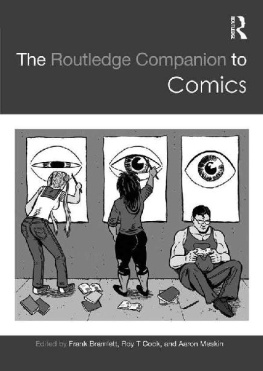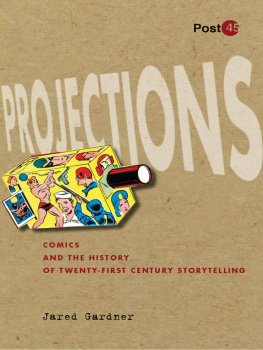The System of COMICS
The System of COMICS
Thierry Groensteen
Translated by Bart Beaty and Nick Nguyen

www.upress.state.ms.us
The University Press of Mississippi is a member of the Association of American University Presses.
Originally published in 1999 by Press Universitaires de Frances as Systme de la bande dessine
Copyright 2007 Presses Universitaires de France
Translation and foreword copyright 2007 by University Press of Mississippi
All rights reserved
Manufactured in the United States of America
Print-on-Demand Edition

Library of Congress Cataloging-in-Publication Data
Groensteen, Thierry.
[Systme de la bande dessine. English]
The system of comics / Thierry Groensteen ; translated by Bart Beaty and Nick Nguyen. 1st ed.
p. cm.
Includes bibliographical references and index.
ISBN-13: 978-1-57806-925-5 (cloth : alk. paper)
ISBN-10: 1-57806-925-4 (cloth : alk. paper) 1. Comic books, strips, etc. History and criticism. 2. Semiotics. I. Title.
PN6714.G7613 2007
741.569dc22
2006016894
British Library Cataloging-in-Publication Data available
CONTENTS
FOREWORD
Thierry Groensteens The System of Comics (Systme de la bande dessine, Presses Universitaires de France, 1999) contains a ground-breaking analysis of the operation of the language of comics, offering the most important semiotic analysis of the medium published to date. A rigorously argued work, The System of Comics functions as its own best introduction. Our foreword, therefore, will serve only to lay a basic foundation for what is to follow, and to offer some direction for readers coming to this work without the authors deep knowledge of comics, particularly of the Franco-Belgian school.
Questions of comics form have received relatively little attention in English-language scholarship, which has tended to view the medium through historical, sociological, aesthetic (literary), and thematic lenses. Notable exceptions to these dominant approaches include Will Eisners Comics and Sequential Art (1985) and Scott McClouds Understanding Comics: The Invisible Art (1993), two books authored by practicing cartoonists. Both of these works have offered a significant contribution to the dialogue about the comics form, suggesting new avenues for investigation and providing a tool box of terminology that continues to be used to this day. Nonetheless, it is fair to say that both of these contributions have been criticized for their lack of theoretical sophistication. Moreover, each work exists sui generis, removed from the scholarly traditions with which it might best intersect.
One of the great strengths of Groensteens book is the fact that it is deeply integrated into the dominant schools of visual analysis, where it makes an important and unique contribution. Originally published in the Semiotic Forms collection, The System of Comics forcefully brings the medium of comics into the field of semiotics, or the study of signs and sign systems. Generally, semiotics involves the production of signs; communication through signs; the systematic structuring of signs into codes; the social function of signs; and, ultimately, the meaning of signs. In short, semiotics asks not simply what signs mean but how they mean.
While semiotics has traditionally been applied across the humanities in the study of language, culture, and the arts, the application of semiotic thought to the field of comics has been relatively rare. This oversight stems, perhaps, from the low cultural value that has historically been assigned to comics, which has rendered it an unattractive object of study. Yet, as Groensteen demonstrates, this blind spot has little to do with the specific formal qualities of comics themselves. Indeed, as a language that is composed of image sequences and, often, the integration of text, comics would appear to offer a wide range of possible insights into the spatial and temporal operations of the image.
It is the elaboration of these insights which grace the pages that follow. By approaching comics primarily as a language, Groensteen reveals entirely new avenues for scholarly investigation. Beginning with an analysis of the numerous attempts to define comics as a particular medium or mode of expression, Groensteen finds fault with each and every proposed definition, countering them all with his own definition of the form. Founded on the notion of iconic solidarity, his own book-length definition reveals, through minutely detailed analysis of case studies, that comics are a preponderantly visual language in which text plays a subordinate (though far from superfluous) role.
Throughout The System of Comics, Groensteen introduces key concepts for the study of comics form. The first of these is the spatio-topical system, in which the importance of space and place in the comics system is established. Here Groensteen demonstrates that meaning is constructed first and foremost in comics by the specific placement of panels upon the page. Processes of breakdown and page layout are shown to be central to the production of reading, with aesthetic effects generated by the panel, the gutter, the frame, and the margin proving central to the operative logic of comics as a system that communicates meaning. The second key concept introduced by Groensteen is that of arthrology, a neologism from the Greek arthon (articulation) which deals with the study of the relations between panels, whether linear (restricted arthrology) or distant (general arthrology). It is within these explications of arthrology that Groensteen raises the idea of braiding within comics: the way panels (more specifically, the images in the panels) can be linked in series (continuous or discontinuous) through non-narrative correspondences, be it iconic or other means. Whether the relation between the panels is linear through a sequence or distant within a network, Groensteens approach moves beyond the descriptive to provide important and useful tools for analyzing the specific formal functioning of comics as a system that speaks by and through images.
If there will be a limitation regarding The System of Comics for an English-reading audience it will necessarily stem from a lack of familiarity. Where Groensteen takes the time and space to outline detailed readings of individual works or pages, as is the case with works by Tardi, Baudoin, Cuvelier, Yslaire, Muoz, Geerts, and many others, readers will find that his method can provide fascinating and illuminating revelations. However, readers for whom the preceding names are unfamiliar may, unfortunately, find that some of Groensteens nuance will slide by their attention. To call E. P. Jacobs a wordy cartoonist is one thing, but for readers who have not been raised on a diet of Blake and Mortimer albums, the specificity of this off-hand comment may well be lost. Groensteens references throughout The System of Comics are remarkably heterogeneous, ranging from avant-garde comics stylists to cherished creators of childrens comics, from artists associated with superheroes to those firmly rooted in the Franco-Belgian adventure traditions. The breadth of Groensteens understanding of the comics medium and its rich history points to the greatest strengths of this book, which ultimately challenge readers to keep pace.
Of course, matching the authors pace may be simpler said than done. Groensteen has spent a lifetime studying comics, and he has accomplished more in this field than most scholars could dream of. The former director of the comics museum in Angoulme, France, Groensteen has edited two of the most important magazines dedicated to comics that have appeared anywhere in the world:
Next page

